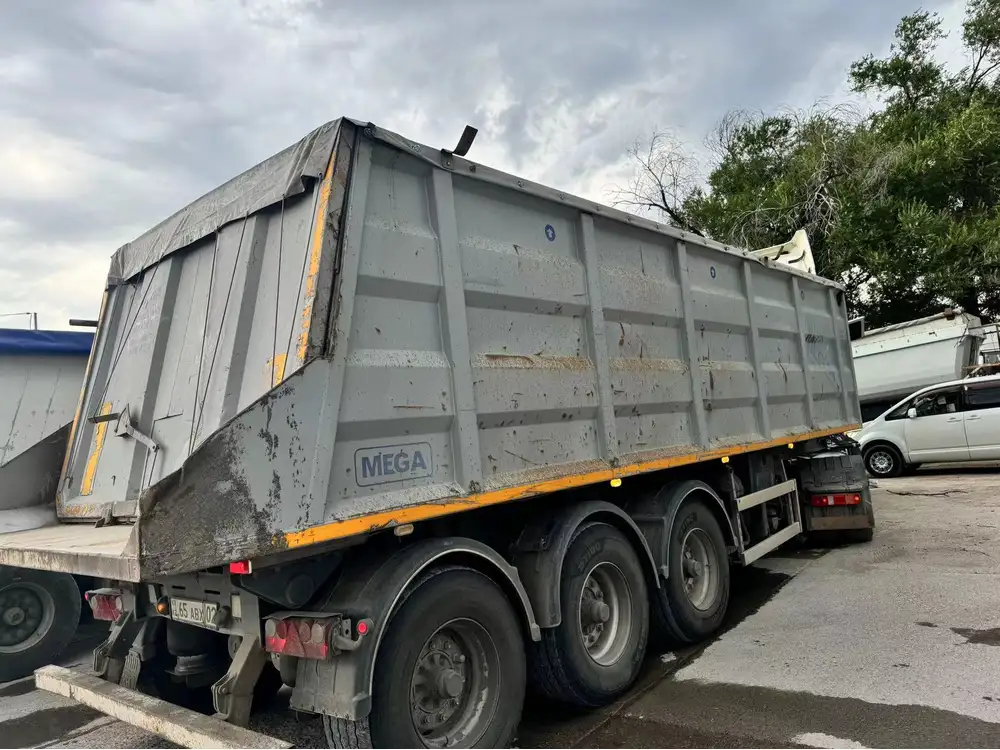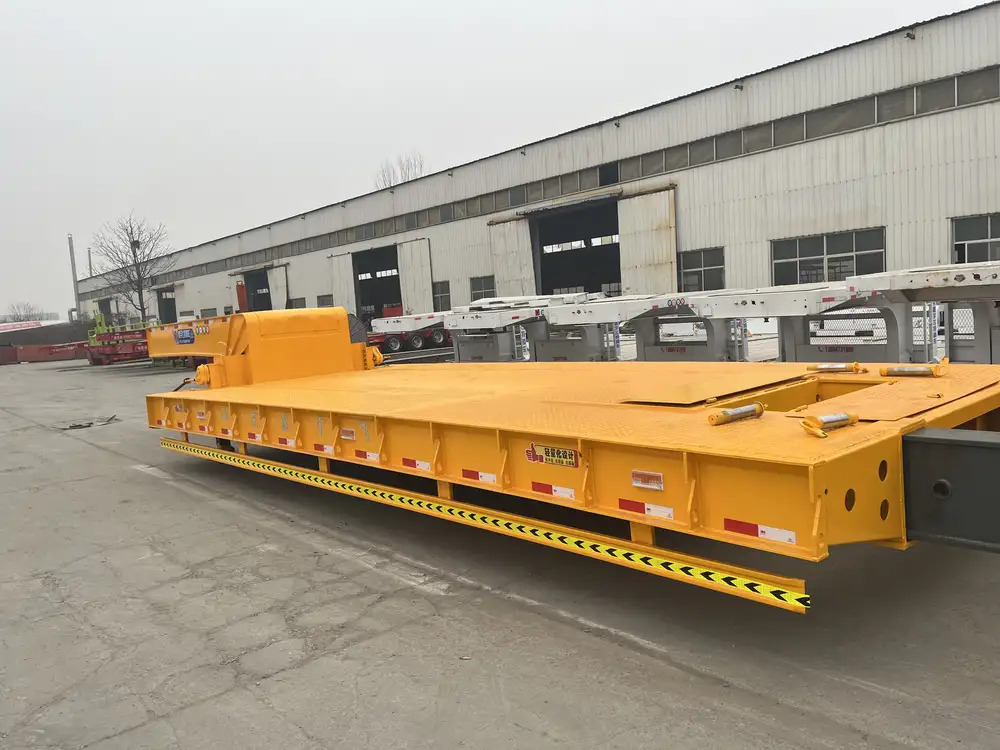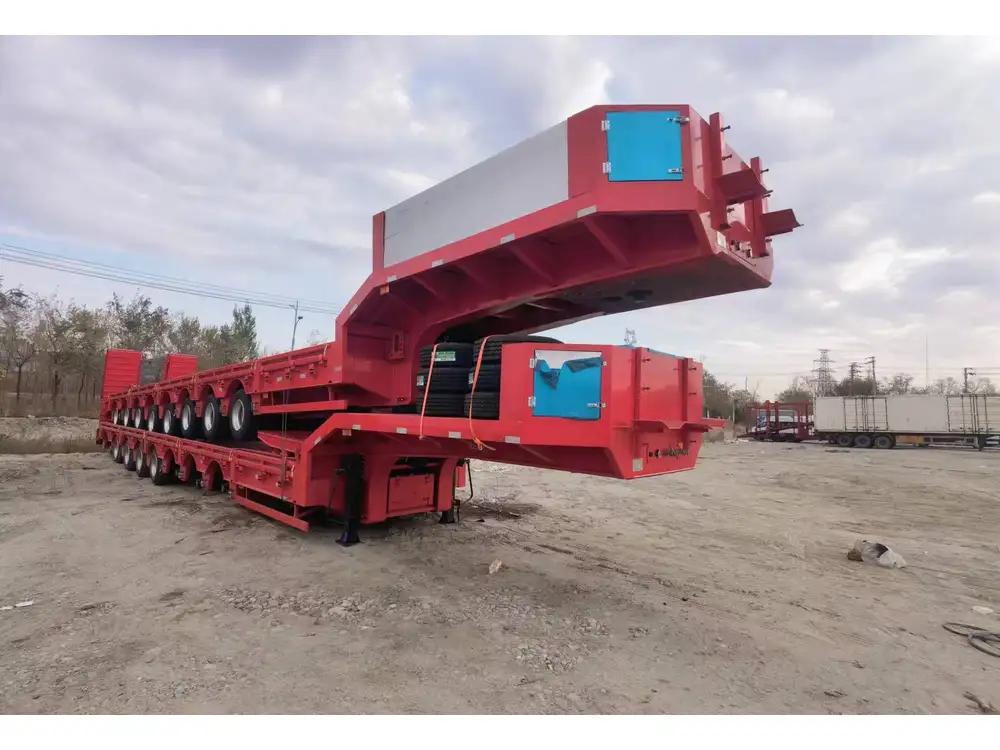Introduction to End Dump Trailers
An end dump trailer is a type of semi-trailer used primarily for hauling bulk materials such as gravel, sand, and construction debris. The unique design allows for easier unloading compared to other trailer types. Understanding how to effectively use an end dump trailer not only requires knowledge of its functionalities but also an awareness of safety protocols and best practices. This guide aims to provide a thorough understanding of how to operate end dump trailers efficiently.
Structure and Functionality of End Dump Trailers

Design Features
- Body: The main structure of an end dump trailer, usually constructed from durable materials like steel or aluminum to handle heavy loads.
- Lift Mechanism: Permits the trailer to raise its front end, enabling the material to slide out from the rear.
- Axles: Generally equipped with multiple axles to distribute weight correctly and provide stability during transportation.
- Tarping System: Often included to keep loads secure and to prevent spillage during transit.
Types of End Dump Trailers
| Type | Features | Best Uses |
|---|---|---|
| Standard End Dump | Basic functionality, typically 2 to 3 axles | Construction debris, gravel |
| Low Bed End Dump | Lowered height for easier loading/unloading | Heavy machinery, large equipment |
| Side Dump Trailer | Tipping mechanism at the side for specific types of loads | Urban construction and tight areas |
Safety Protocols for Operating End Dump Trailers

Pre-Operational Checks
- Inspect Tires: Check for proper inflation and wear.
- Brake Functionality: Ensure brakes are functioning adequately.
- Hydraulic System: Inspect for leaks and ensure fluid levels are adequate.
- Lights and Signals: Verify that all lights and reflective signals are operational.
Loading and Unloading Procedures
- Avoid Overloading: Always adhere to the weight limits recommended by the manufacturer. Overloading can lead to accidents and damage.
- Stable Ground: Ensure the trailer is on level ground before unloading to avoid tipping.
- Unloading Position: Position the trailer in a way that allows for a clear path for the material to exit.
- Monitor the Load During Unloading: Stay aware of the load’s behavior to prevent sudden shifts.
Best Practices for Using an End Dump Trailer

Efficient Loading Techniques
- Use Appropriate Equipment: Employ front-end loaders or excavators for loading to optimize time and reduce spillage.
- Measure Load Heights: Use measuring tools to ensure the load does not exceed safe height levels.
- Distribute Weight Evenly: Proper weight distribution prevents imbalance during transport.
Strategies for Unloading Effectively
- Use a Spotter: In crowded job sites, having a spotter can help direct the unloading process, ensuring materials are deposited accurately.
- Control the Lifting Speed: Raise the trailer gradually; swift movements can cause instability and potential accidents.
- Check Surrounding Area: Ensure that the area behind the trailer is clear to prevent blockages and hazards.
Troubleshooting Common Issues

Hydraulic Failures
| Problem | Symptoms | Solutions |
|---|---|---|
| Slow Lifting | Hydraulic fluid leaks, lagging in lift speed | Check and refill hydraulic fluid; inspect seals for leaks |
| No Lift | Complete loss of function | Inspect pump for faults; replace faulty components |
Tipping Risks
| Situation | Warning Signs | Preventive Measures |
|---|---|---|
| Unbalanced Load | Trailer swaying or rocking | Measure the load; always ensure stable ground during unloading. |
| Uneven Ground | Unsteadiness during lift | Use proper stabilization methods; avoid very steep gradients during unloading. |
Comparing End Dumps with Other Types of Trailers
When deciding whether an end dump trailer is the right choice, it’s beneficial to compare it with other types.
| Feature | End Dump Trailer | Dump Trailer | Side Dump Trailer |
|---|---|---|---|
| Unloading Speed | Fast unloading, due to gravity | Moderate, requires tilting | Immediate, side-based drop |
| Weight Capacity | High, but subject to weight distribution | Very high, better for traditional bulk | Moderate, side-loaded |
| Versatility | Great for varied materials | Limited to semi-dry bulk | Ideal for precise deposits |

Understanding Legal Considerations
Weight Regulations
Adhering to federal and state trucking regulations is critical. Ensure that loads are within legal weight limits to avoid fines and penalties. Understanding your state’s Department of Transportation (DOT) guidelines will prevent legal complications during transport.
Licensing Requirements
Check if you or your drivers need specific certifications to operate end dump trailers. This typically includes:
- Commercial Driver’s License (CDL): Required for transporting heavy loads.
- Endorsements: Certain states may require additional endorsements for specific trailer types.

Maintenance Tips for Longevity
Maintaining your end dump trailer ensures not only safety but also prolongs its lifespan.
Regular Inspections
- Weekly Checks: Inspect for loose bolts, tire integrity, and overall cleanliness.
- Monthly Maintenance: Ensure hydraulic systems are serviced and check for any signs of wear on hoses and connections.
Seasonal Preparations
- Winterization: Prepare for winter conditions, checking for rust and applying preventative treatments to the undercarriage.
- Summer Readiness: Check brake systems and integrate cooling fluid checks for optimal performance.

Conclusion
Understanding how to use an end dump trailer, from operational efficiency to maintenance, encompasses several aspects critical for safety and productivity. Whether you are involved in construction, landscaping, or transporting materials, mastering the intricacies of end dump trailers can greatly enhance your operations. Ultimately, focusing on safety protocols, regular inspections, and best practices fosters not only a more efficient project flow but also safeguards the well-being of all personnel involved.
Employing this knowledge effectively transforms the way you manage your end dump trailer operation, ensuring that you stay ahead in a competitive field. Use this guide as a foundation to refine your practices and refine your understanding of operational excellence.



